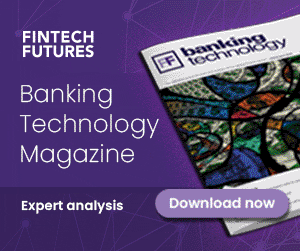Today, financial services are undergoing an API-powered transformation, driven by the shift towards Open Banking, Open Finance and Open Data. This movement is global, unstoppable and is shaking up traditional financial services worldwide, with different regions setting powerful examples of what Open Banking and Finance can achieve.
For example, while not necessarily tagged as ‘Open Banking’, in India the introduction of digital identity and the Unified Payments Interface (UPI) has secured India’s role as a global leader in digital innovation in financial services. The two combined have driven a significant step change in financial inclusion and transformed the way transactions are conducted at an unprecedented scale.
Brazil offers another compelling success story with Pix, its government-led real-time payments system. Pix demonstrates the transformative potential of centralised innovation, rapidly reshaping Brazil’s financial landscape and providing a model for other nations seeking to modernise their payment infrastructures.
In the Middle East, the Kingdom of Saudi Arabia and the UAE are fostering fintech innovation through robust regulatory frameworks and centralised infrastructure. The UAE, in particular, has positioned itself as a global fintech hub, with Open Finance being driven in a highly innovative way — with a broad scope, a clear commercial framework and central infrastructure to ensure a fast, high quality and lower cost delivery.
Around the globe we see the markets that move the fastest are driving increased inward investment, economic growth and are also attracting top talent to their regions.
So, what does 2025 hold for Open Banking in the UK and US specifically, as well as the wider global ecosystem?
The UK: Added pressure to deliver Open Finance
The UK has long been at the forefront of Open Banking, pioneering its regulatory framework under the guidance of the Open Banking Implementation Entity. This groundwork has enabled secure, consumer-consented data sharing and payment initiation, sparking innovation and increased competition.
But now, the UK faces the dual challenge of expanding beyond the regulatory minimums and extending from Open Banking to Open Finance.
The government recently published a National Payments Vision for the UK, outlining a path to ensure the industry continues to be a key enabler of innovation and economic growth for UK PLC. Open Banking was at the heart of this vision, with an explicit understanding that to fulfil the potential it must move beyond the current limitations.
Specifically, there needs to be a commercial framework to enable Open Banking payments to succeed at scale.

Ozone API co-founder and chief executive officer Huw Davies
Open Finance then takes the principles of Open Banking and extends them to cover the entire financial ecosystem, including pensions, insurance, investments, and mortgages. It’s an ambitious vision that will require commitment from regulators, fintechs, and traditional financial institutions alike. For consumers, the promise is clear — greater empowerment, better services, and seamless financial experiences.
To make it a reality, the UK must move with purpose and clarity, addressing issues like interoperability of standards, consumer trust, and cross-industry collaboration.
Pressure is mounting on regulators, like the Financial Conduct Authority (FCA), to accelerate progress, and the stakes couldn’t be higher. Over the next few years, the UK’s success in transitioning to Open Finance will define whether it can maintain its status as a global leader in financial innovation.
Without clear and meaningful progress on both of these fronts in 2025, the UK is certain to fall behind.
The US: Navigating regulatory challenges
Across the Atlantic, the US finds itself at both an earlier and a later stage in the Open Banking journey.
There is a significant financial data-sharing ecosystem in the US with consumers sharing access to financial data, broadly and at significant scale. The market landscape is therefore mature, albeit with banks historically playing a much more passive role having not invested in owning the API access layer.
The Consumer Financial Protection Bureau’s (CFPB) ongoing efforts to implement Dodd-Frank Section 1033 mark a significant step toward establishing a clear regulatory framework and a much more concrete step towards ensuring consumer data access rights are enabled via secure, high performing and standards-based open APIs.
This is a seismic shift for the market, but progress may be slow, if hindered by a volatile political and regulatory environment following the change of government, alongside challenge and lobbying by some banking groups.
Yet, there is hope. In 2025 the US market embarks on the delivery of regulated Open Banking, with the formal approval of a Standards Setting Organisation a likely early move. The clock has started ticking and, unless there is a change of direction from the new administration, the first waves of banks will need to rapidly move into implementation mode to ensure they are ready to meet their obligations.
Ultimately, the US will be upgrading an existing huge ecosystem, as it moves away from screen scraping and to a more secure, standardised way of enabling consent-based data sharing, with the banks playing a much more active role through their open APIs.
The US has the potential to unlock enormous opportunities—not just for businesses, but for millions of underbanked and underserved consumers, as well as banks.
Worldwide: A global push for interoperability and security
The future of Open Finance, however, is global and isn’t just a story about the UK or the US.
Firstly, one key prediction is that the global rollout of Open Banking and Open Finance will continue and the pace will pick up. The Cambridge Centre for Alternative Finance suggests that 95 markets are moving towards the implementation of Open Banking and Open Finance frameworks, across all regions.
We’re seeing significant momentum building across Latin America, Asia and Africa, bringing in huge populations and economic regions as they attempt to unlock the potential of Open Finance.
As the global movement becomes more complex, interoperability will be its linchpin. The world’s financial systems must work together seamlessly, enabling consumers and businesses to share data and conduct transactions across borders without friction.
While a single global standard is highly improbable in anything other than the very long term, I expect 2025 to bring some moves towards interoperability. We already have FAPI establishing itself as the de facto security protocol.
At the same time, we’ll see the benefit from domestic Open Banking standards evolving in different and more innovative ways as they develop more capabilities across payments, embedded finance and across broader product sets. In fact, in the short term the divergence should accelerate innovation for those who can cope with the complexity.
But 2025 may be the year where we see some concrete moves towards interoperability between domestic Open Banking ecosystems. Collaboration between governments, regulators, and industry players can drive interoperability, create more inclusive ecosystems and unlock significant economic benefit in areas like trade finance.
Cybersecurity threats and fraud remain significant concerns, particularly as sensitive financial data flows through ever-more connected systems. But innovation isn’t just happening on the side of attackers — defenders are stepping up, too.
Advancements in fraud detection and prevention, including AI-driven anomaly detection and biometric authentication, will become industry standard. International cooperation will also be critical, with global bodies like ISO playing a leading role in developing frameworks that balance security with the flexibility needed to foster innovation – and these will need to be written into Open Banking standards too.
Final thoughts
As we look toward 2025, the road ahead is both exciting and uncertain.
The UK has the opportunity to maintain a leading position in Open Finance, although it remains to be seen if it will move with sufficient purpose; while the US faces a pivotal moment in progressing to an upgraded, ecosystem driven by standards-based APIs and a regulatory framework.
Globally, we’ll continue to see acceleration in many markets across Latin America, Asia and Africa as markets move towards real implementation. We may also see the first green shoots emerging around global interoperability, and collaboration.
If these challenges are met with the determination and ingenuity they demand, Open Finance could truly transform the global economy. Imagine a world where consumers have full control of their financial data, where underserved communities have access to credit, and where cross-border transactions are as seamless as sending an email.
That’s the promise of Open Finance—and with the right steps, 2025 could be a pivotal year for this to become a reality.
Huw Davies is co-founder and chief executive officer of Ozone API











